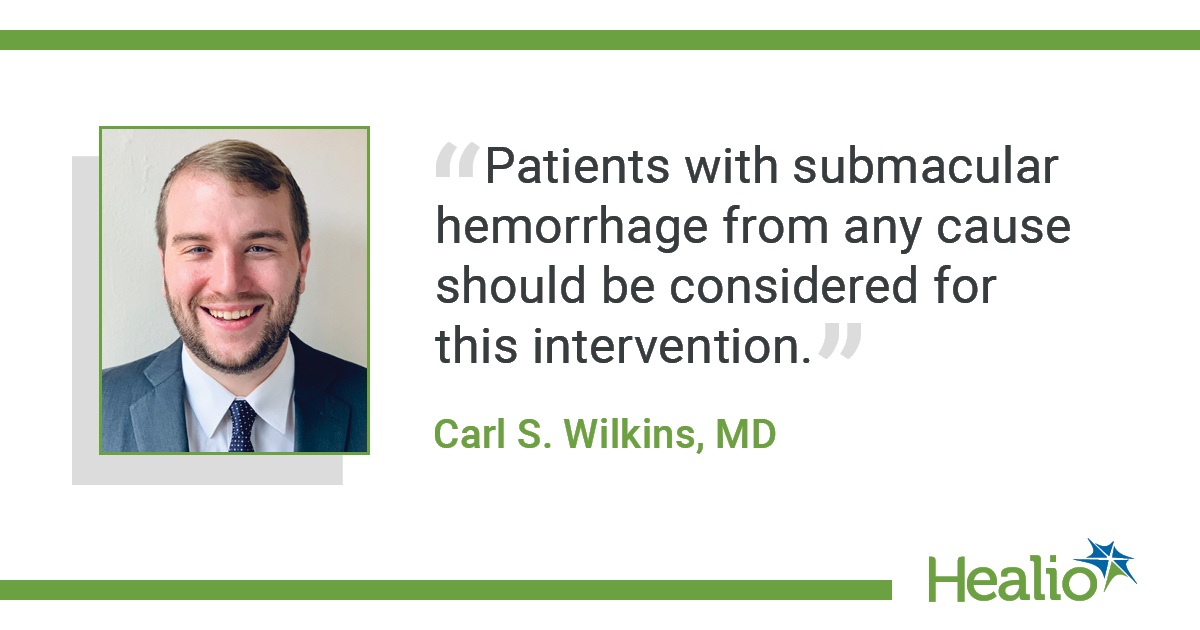PPV, subretinal tissue plasminogen activator injection effective for submacular hemorrhage
Pars plana vitrectomy with subretinal tissue plasminogen activator injection led to significant vision improvement in patients with fovea-involving macular hemorrhage, according to a study.
“Patients with submacular hemorrhage from any cause should be considered for this intervention, recognizing that each patient’s suitability for this may be limited by preoperative vision, ability to undergo surgery and other usual considerations for interventions,” study co-author Carl S. Wilkins, MD, told Healio/OSN.

The retrospective interventional case series included 37 patients with submacular hemorrhage who underwent pars plana vitrectomy with subretinal tissue plasminogen activator injection. Wilkins and colleagues evaluated the primary outcome of postoperative visual acuity at 1 month and 3 months and secondary outcomes such as median visual acuity at 3 months by location of hemorrhage and the underlying diagnosis.
The median preoperative visual acuity in the cohort was 20/2,000. The mean time from submacular hemorrhage to surgery was 14.6 days. Overall, 22 of 36 patients experienced postop visual improvements, with 15 patients gaining three or more lines of visual acuity and seven patients gaining one to two lines. The median visual acuity at postoperative month 1 was 20/347, which improved to 20/152 by postoperative month 3 (both P < .01).

“The overall results were that visual acuity improved from counting fingers preoperatively to 20/150 at month 3 postoperatively, which was our primary outcome. Among these patients, 42% recovered three lines or more as measured by Snellen visual acuity. Our complication rate was comparable to prior reports of this intervention,” Wilkins said.
The researchers found the most common underlying diagnosis was neovascular age-related macular degeneration in 43.2% of patients, followed by undifferentiated choroidal neovascularization (CNV) in 18.9% and polypoidal choroidal vasculopathy in 18.9%. Additionally, 78.4% of patients received a bevacizumab injection at the time of surgery.
“We also analyzed change in visual acuity between all subgroups — [neovascular] AMD, polypoidal choroidal vasculopathy, undifferentiated CNV, retinal aneurysm or traumatic CNV — and found no difference between our outcomes,” Wilkins said. – by Robert Linnehan
